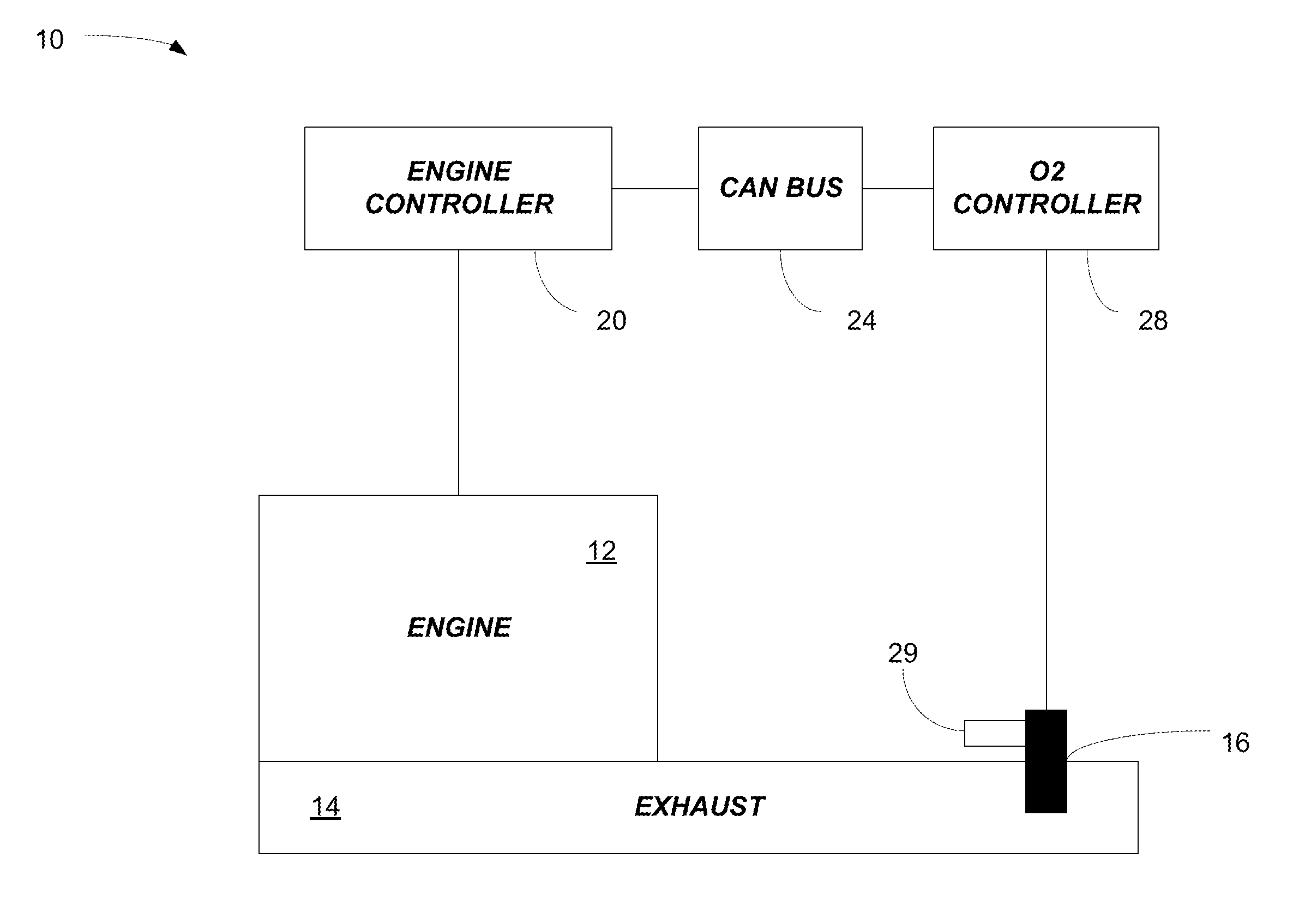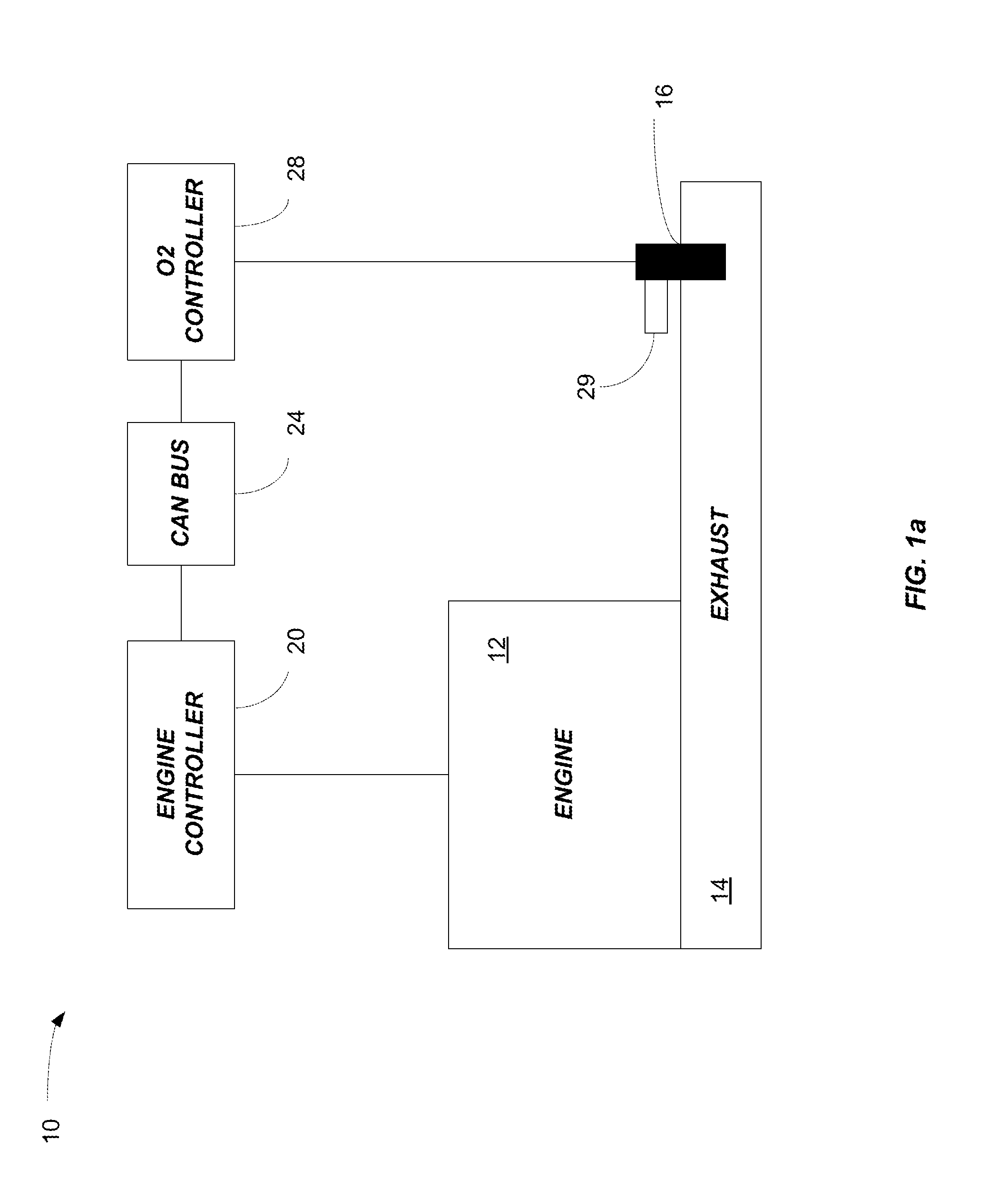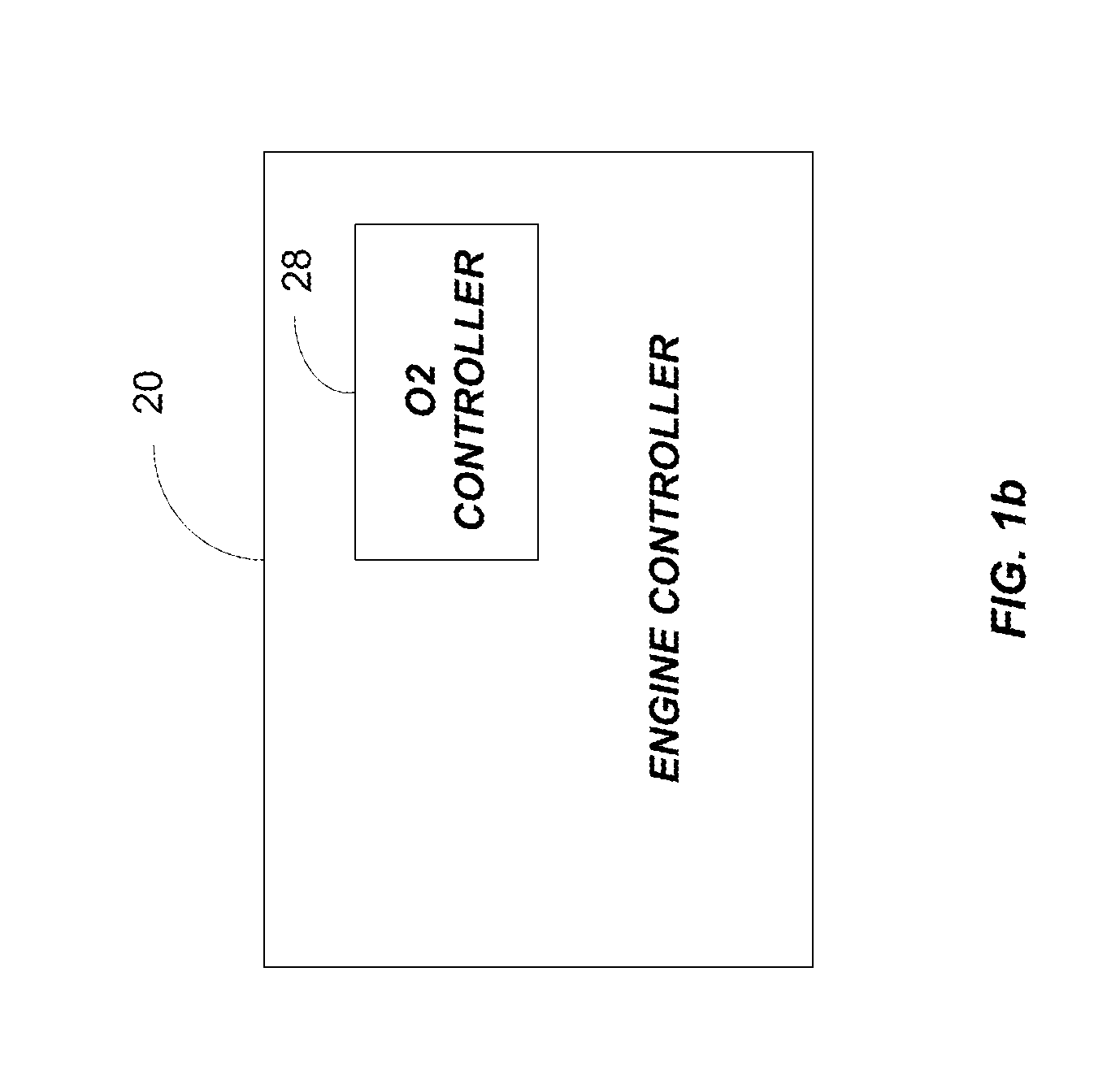Oxygen sensor regeneration
a technology of oxygen sensor and oxygen sensor, which is applied in the direction of machines/engines, electrical control, instruments, etc., can solve the problems of engine damage and negative impact on exhaust emissions, and contamination of oxygen sensor, so as to eliminate or reduce the damage to the sensor
- Summary
- Abstract
- Description
- Claims
- Application Information
AI Technical Summary
Benefits of technology
Problems solved by technology
Method used
Image
Examples
Embodiment Construction
[0015]Before any embodiments of the invention are explained in detail, it is to be understood that the invention is not limited in its application to the details of construction and the arrangement of components set forth in the following description or illustrated in the following drawings. The invention is capable of other embodiments and of being practiced or of being carried out in various ways
[0016]FIG. 1a illustrates a system 10 having an engine 12, an exhaust system 14, and an O2 sensor 16 (including a heater) positioned in the exhaust system 14. The engine 12 is controlled by an engine controller 20. In the embodiment shown, controller 20 communicates with other vehicle systems and controllers via a vehicle bus 24, such as a controller area network (“CAN”) bus. The O2 sensor 16 is controlled by an O2 controller 28, and the O2 controller 28 is connected to the bus 24. Alternatively as illustrated in FIG. 1b, in some embodiments, the functionality of the O2 controller 28 is em...
PUM
 Login to View More
Login to View More Abstract
Description
Claims
Application Information
 Login to View More
Login to View More - R&D
- Intellectual Property
- Life Sciences
- Materials
- Tech Scout
- Unparalleled Data Quality
- Higher Quality Content
- 60% Fewer Hallucinations
Browse by: Latest US Patents, China's latest patents, Technical Efficacy Thesaurus, Application Domain, Technology Topic, Popular Technical Reports.
© 2025 PatSnap. All rights reserved.Legal|Privacy policy|Modern Slavery Act Transparency Statement|Sitemap|About US| Contact US: help@patsnap.com



